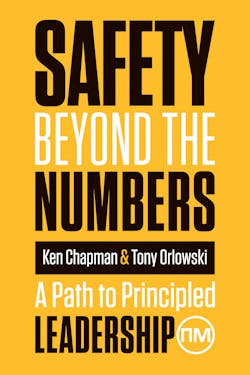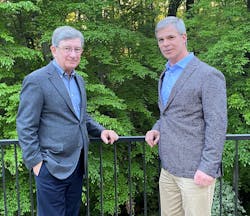Safety is a wonderful calling. That’s how Tony Orlowski, a 25-year safety veteran, feels about his chosen profession. And because of that, he would like to see improvements in how organizations think about safety.
In the first example, Jay is a 26-year employee of a power company whose many industry awards include winning the Lineman’s Rodeo. He serves as a roving employee safety observer lead for his company and has created improvements in training methods. And he’s never been involved in a safety incident.
On one particular job, Jay was working with Chris, a second-year apprentice. Chris noticed that Jay failed to put a blanket out before reaching for a wrench. Chris reminded him to do so, and Jay replied that this task would only take a minute. Those were the last words Jay ever spoke.
Analyzing the incident, which resulted in Jay's tragic death, the authors noted that Chris was asked why he didn’t insist further as he could have told Jay he was lowering the bucket and then just pushed the emergency lever to return it to the ground. Chris replied that he didn’t feel he was in a position to argue with Jay. After all, he was an apprentice of two years and Jay was a legend.
How could something like this happen?
The authors explain that this is an example of a company built around a compliance culture. Chris was uncomfortable challenging the more experienced and knowledgeable Jay because he wanted Jay’s approval.
Chris left it at compliance and rejected the moral obligation to act in Jay’s best interests. Chris did not take ownership of the situation. "Chris lives every day with this regret… he hurts for Jay’s family, and he feels ashamed he did live up to his highest opinion of himself,“ the authors write.
In the second example, Benny, the go-to guy of his company, also doubled as a tower technician. He had been at his job for 11 years when a tragedy in his family occurred. At the funeral service for his family member, he heard about a problem at work and said he would be in the next day to look at it.
When Benny arrived at work the next day Jessie, a supervisor, felt that Benny was not in the correct emotional state to be able to do the job safely and alerted HR. At a meeting between the three of them, Jessie spoke up. “I just can’t get comfortable with you climbing today. You are too valuable to this team. I will be happy to revisit this with you in a few days, but right now, I’d like you to go home.”
Benny did. After returning from a mental health vacation, he told Jessie that he knew he wasn’t in the right frame of mind and had decided to commit suicide from that tower. While Jessie knew that the rules of the company could have allowed Benny to climb the tower that day, Jessie felt that “you can’t write rules for every situation. You just got to do the right thing and hope your decision is judged fairly.”
Tying a safety person’s moral responsibility to the culture is something that must be acknowledged, the authors explain. “Safety outcomes are within a leader’s sphere of influence and reasonable people inherently understand the moral responsibility. They are unable to simply move on after dealing with only the financial and legal aspects of an injury. An organization that does not acknowledge and support leaders in meeting this moral responsibility creates even greater frustrations.”
Organizational Structure
To understand the transformation to a culture where safety professionals understand how to make the best decisions possible, first, they need to understand the characteristics of their organization. The authors’ experience has revealed four basic types of organizations, based on how they view employees:
- Incompetent
For this category, managers believe that most of their people are incompetent and therefore they need to stand over workers. The result of this is frequent, including significant, injuries. If a company compares their rate of injury to competitors, their incident rate is well above average. Managers want better records but feel that this won’t happen until they find better people. - Dependent
For this category, managers believe that the people are decent and well-meaning, but they don’t have the knowledge, experience, or judgment that the managers have. Managers refining the safety rules taking personal decision-making out of the equation. These organizations have recordables that are reasonable and maybe a significant injury once or twice a year. Performance is measured by incident rate and these companies are near industry rates and are considered a compliance-based facility. - Economic Interest
Believing that people only respond to money, in this organizational structure compensation is tied to personal safety rates. Injury rates are low, but that seems to coincide with moving to a system tied to this compensation system. As injuries are hidden this places strain on employees as they are they are unable to live up to the highest opinions of themselves. - Ownership
In this structure, everyone on the team has earned their spot. They hire competent people, train, and support them, but they are responsible for their own themselves. The company continually builds upon its safety strategies and feels lucky to have the employees that they do. People in this system not only keep themselves safe but also their co-workers. Not motivated by fear or economic reasons they are the heroes of their own life story.
“Most people are in the compliance phase,” says Orlowski. “Do what we tell you to do, and you’ll be OK. If people would just follow the rules that would be the solution. While compliance is necessary, it’s not the end goal. They must move to the belief that the goal is to protect our workers and to do that safety professionals need to understand what exactly they are responsible for and how they can take ownership.”
And how do you create an ownership model? “Culture starts at the top. If the leadership doesn’t buy into it, it will never take off. As [my co-author] Chapman always says, ‘An organization will never rise above the level of its leaders.’ If you want the highest performing safety program, the leader has to embrace it and be out front about it.”
An example of this type of leadership is that of Alcoa. When Paul O’Neil was a leader at Alcoa Inc., he instituted zero lost workdays due to injuries and fatalities much to the surprise of company leaders as the company already had one of the lowest workday lost rates in the industry. When a fatality occurred early in his tenure, he flew to the facility, gathered his senior team, and said the following. “We killed him. I killed him.”
Analyzing the situation he said, “People in the organization were stunned by the idea that they should accept personal responsibility for his death...There was never a more caring organization in the traditional sense. Every person injured or killed, they genuinely mourned. But they didn’t understand that they were responsible for it.” By the time O’Neil retired they had achieved the rate of 0.07 lost workdays lost.
This culture of ownership is exactly the role that Orlowski advocates is ideal. “I believe that companies are moral institutions that do good for the world. If you view companies in this manner, rather than an adversarial role that produces profits at the expense of employees or customers, then performance increases. And at the foundation of the company is safety, with safety leaders understanding the influence they have on the quality of life of their workforce."



